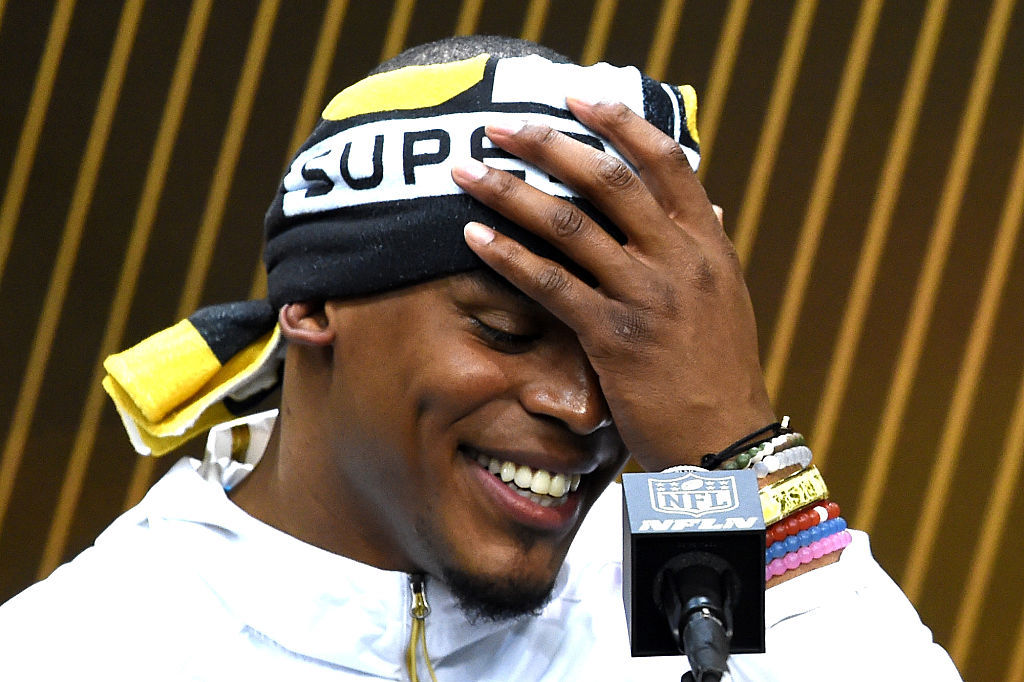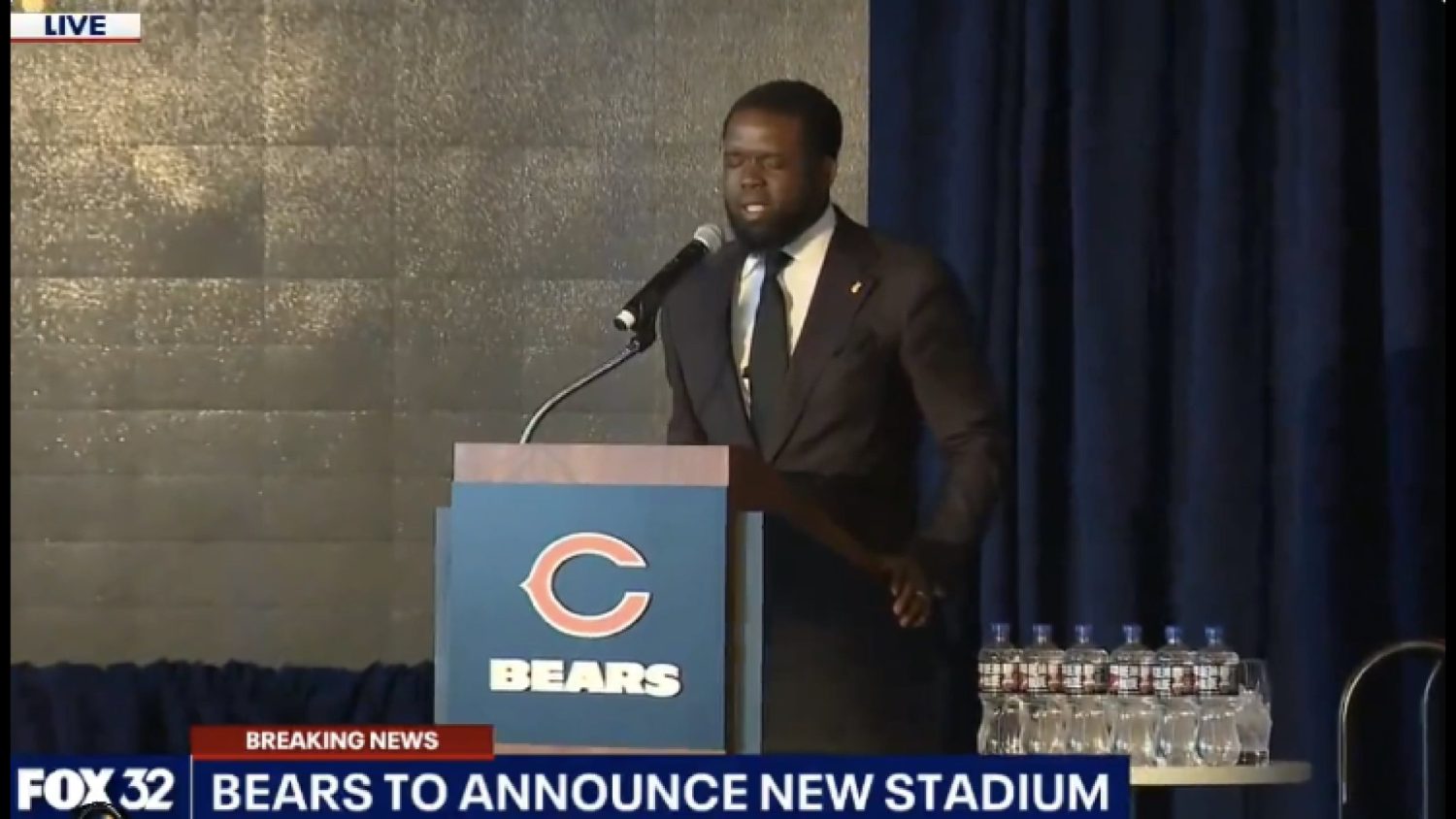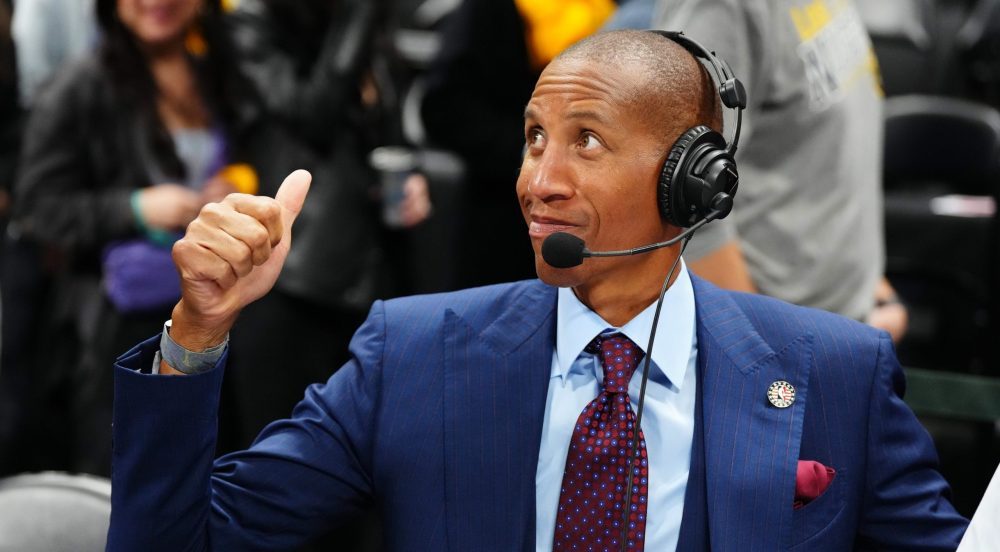“You know what’s confusing? How can I reword questions I’ve been asked so many times? Golly. Nothing pretty much has changed since I’ve seen you guys 24 hours ago. I had an unbelievable sleep, but yet I’m up here again. It’s cool. It’s like I don’t know how you want to say it. I sound like a broken record.”
That was Carolina Panthers quarterback Cam Newton on Wednesday, at a loss for new words as he met with the media for the third consecutive day in the lead-up to Super Bowl 50. Since Super Bowl week kicked off in the Bay Area three days ago, Newton and his teammates have been forced to sit through 4 hours and 20 minutes’ worth of open media sessions, as have the opposing Denver Broncos.
“It’s not necessarily the media pressure, it’s just media requirements that is getting up under a lot of people’s skin,” Newton added, per Pro Football Talk. “I think I’ve got to meet with you guys another time and nothing’s going to change. I’ll be walking out in this room, walking up those stairs, going to another meeting, going to practice, probably playing a couple of video games, talking to my parents, making sure they make it here on time, waking up, brushing my teeth – obviously – go to another meeting. Depends on what the breakfast looks like, if I may eat it or not. Go to the team meeting, come back to you guys and talk. I don’t get it. I don’t know what you guys want to know, man, but it is what it is.”
Newton asked why he's wearing socks with sandals. Asks back: "Why are you wearing jeans with shoes?"
— Eric Adelson (@eric_adelson) February 4, 2016
I’ve attended dozens of these sessions at half a dozen Super Bowls and can report to you that 99 percent of the content mined from these stale, over-the-top meetings is crap.
By mid-week, the less-heralded players are ignored. They fulfill their obligation by sitting in a hotel ballroom for 75 minutes each day, but — to steal a line from Marshawn Lynch — they’re really just there so that they don’t get fined. Most of them sit staring at their phones, scrolling through social media while reporters scramble by them in attempts to jockey for position at nearby tables possessing star players.
Yeah, the popular players continue to be bombarded by flocks of media throughout the week, but by Wednesday you can hear them recycling the same answers over and over again.
The robotic process isn’t efficient, rewarding or fruitful, but the NFL credentials, like, 4.6 million media members and understandably feels obliged to offer the press as much access as possible.
This isn’t an NFL problem, it’s a media problem. You can’t fault the league for issuing thousands of credentials to their signature event. The more coverage the better, obviously. But what astounds me is that in an age in which traditional media outlets are hemorrhaging money and/or shutting down, hundreds continue to invest in live coverage of the Super Bowl.
The problem is that many of us continue to possess this hilariously antiquated view that in order to provide comprehensive, high-quality coverage of an event, we must have boots on the ground. But that’s a 1986 mentality that remains inexplicably stuck to our 2016 media practices.
Clay Travis of Outkick the Coverage summarized this reality when writing about how his counterpart writers complained he was scooping them by Periscoping from this year’s SEC Spring Meetings:
“Here’s the deal: if you can’t write more interesting stories actually being there than the people are writing watching my Periscope feed can write, why are you traveling and writing at all? Why not just watch my Periscope feed too? Why should your company be paying to put you up in a hotel and pay for you to travel and pay for you to write what others are writing from their couches?”
I’ve always gone out of my way to make my live coverage as unique as possible, but it’s amazing how many of the folks around me appear to be on site merely to phone in reports that are indistinguishable from anything you’d get from an Associated Press wire subscription. There can’t possibly be a return on investment there, yet old-school local outlets continue to send media across the country for these events just because that’s what they’ve always done.
I do think that’ll change, and we’ll get to a point at which only national media, local media from Super Bowl team markets, local media from the Super Bowl city and maybe some international media will bother sending correspondents across time zones to spend a week asking dull questions in order to receive canned quotes from exasperated players.
I know that on the surface, less media is a bad thing and media diversity is a good thing. But by no means would a decreased media presence at the Super Bowl cause us to risk losing the ability to keep the NFL and its players honest. Radio reporters from Boise don’t typically expose major league scandals.
Super Bowl coverage doesn’t have to dwindle to such an extent that fans will lose consumption options in a significant way — right now, it would be impossible to consume every piece of content produced regarding the game, or even the majority of it — or that the NFL will gain the ability to rule with an iron fist. Instead, a laughably saturated market merely needs correction.
That’ll happen when the folks making content and coverage decisions at local outlets — many of whom utilize archaic, Baby Boomer media strategies — are replaced by Millennials who realize that they’re better off utilizing raw content culled by those on site in order to carefully produce unique features at home. And when that happens, the NFL will finally be able to give Super Bowl players like Newton the chance to ditch platitudes and deliver thoughtful, unique answers in shorter and less frequent media sessions.
When that day comes, quality will begin to trump quantity at the Super Bowl. And we’ll all be better off.





